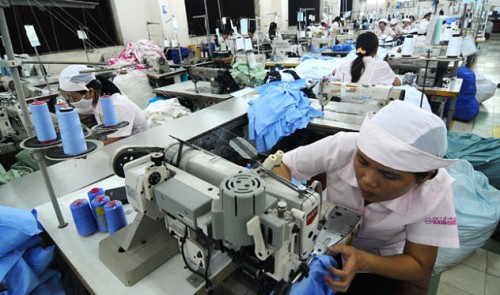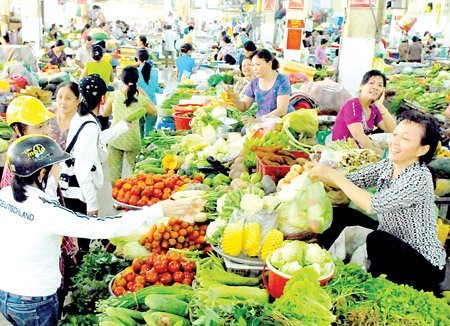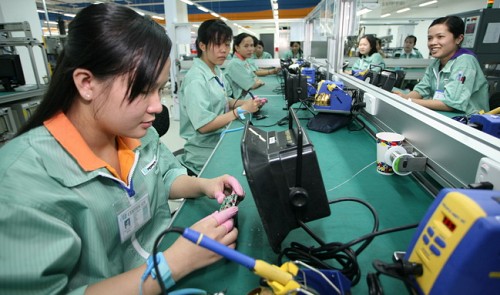Vietnam posts fastest first-half growth in five years: World Bank
Vietnam posts fastest first-half growth in five years: World Bank
Although progress on structural reforms has slowed down, Vietnam’s economic growth has continued to strengthen, with gross domestic product (GDP) expanding at the fastest pace since 2010, the World Bank said Monday.

Vietnam posted a 6.28 percent GDP growth rate in the first half of 2015, the World Bank said, citing its latest Taking Stock report, a review of Vietnamese economic performance.
Such a growth rate is the nation’s highest in the first half of the year for the past five years, according to the report, which is published twice a year.
Against a backdrop of low inflation, the State Bank of Vietnam has gradually loosened monetary policy to spur growth while periodically adjusting the exchange rate to maintain external competitiveness, the World Bank said in a press release.
Fiscal accounts, however, have emerged as a source of concern for Vietnam, the World Bank noted.
The nation’s debt has risen rapidly in recent years, and debt servicing costs could place an increasing burden on the budget.
As of the end of 2014, Vietnam’s total outstanding public debt was estimated at VND2.347 trillion (approximately US$110 billion), according to the report obtained by Tuoi Tre News.
As a share of GDP, total public debt rose quickly from 50 percent in 2011 to an estimated 59.6 percent in 2014.
Government debt accounted for 79.6 percent of the total public debt, whereas 19 percent was government-guaranteed debt, and around 1.4 percent, local government debt.
Total outstanding public debt stock could peak at about 65 percent of GDP by the end of 2017, according to a forecast by the Vietnamese Ministry of Finance.
Meanwhile, Vietnam’s exports suffered a drop, whereas imports increased, which resulted in a current account deficit in the first quarter of 2015.
Weaker reform progress
Progress on structural reforms has been less strong, especially regarding state owned enterprises (SOEs) and the banking sector, according to the World Bank report.
While Vietnam has set a target of having 289 SOEs privatized by the end of this year, only 29 enterprises underwent the process in the first quarter, which illustrates that progress on SOE reform continues, but at a gradual pace.
“Implementing the legal and regulatory framework for SOE management and corporate governance issued last year and increasing percentage of ownership that can be acquired by the private sector should remain key priorities,” the World Bank suggested.
Vietnam’s reforms targeting the banking sector continued during the first half of 2015, with a number of acquisitions of smaller banks by major state-owned commercial banks.
“However, the lack of an appropriate legal framework and the VAMC’s own limited capital base and operational capacity remain constraining factors for resolving bad debts,” Sandeep Mahajan, Lead Economist for the World Bank in Vietnam, commented, referring to the Vietnam Asset Management Company (VAMC), which is a state-owned firm created to purchase the bad debt of Vietnamese banks.
The Taking Stock report also features a special section on the labor market in Vietnam, which details a dramatic shift in the employment landscape over the past 25 years.
While jobs in Vietnam once were characterized entirely by family farming, collectives and SOEs, employment now has shifted toward manufacturing and services, household enterprises outside agriculture, and private domestic and foreign-owned firms, according to the report.
Taking Stock provides suggestions for further transforming Vietnam’s labor market, including more proactive measures to strengthen the industrial relations system, balance labor market flexibility with sustained productivity growth, and manage social risks in a more market-oriented economy.
“Vietnam lacks well-functioning institutions for collective bargaining and dispute resolution,” the report notes, saying these weaknesses must be addressed to promote a better functioning labor market.




















